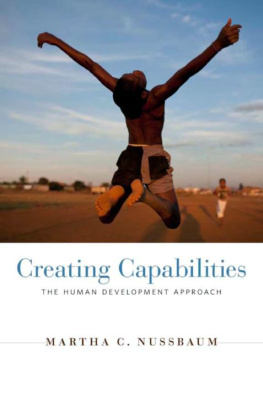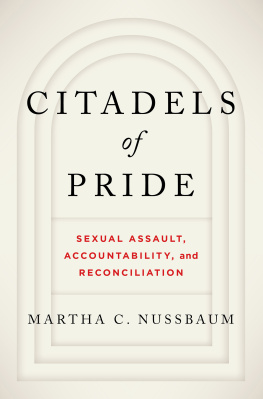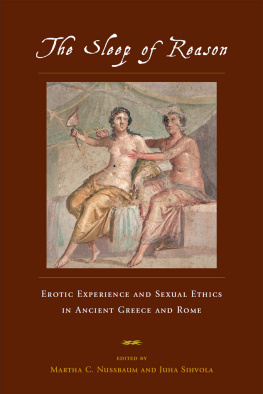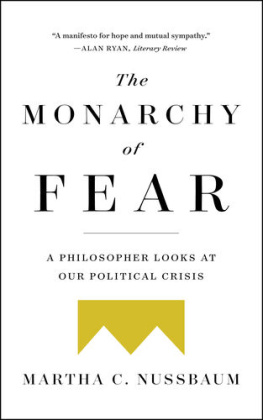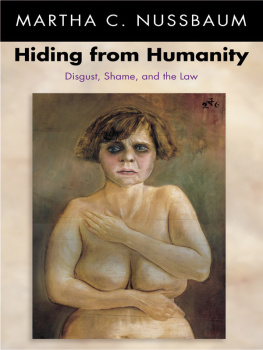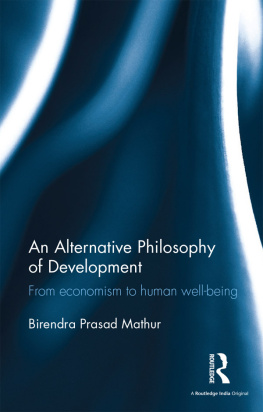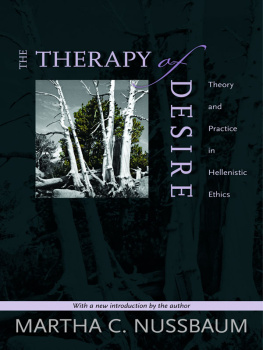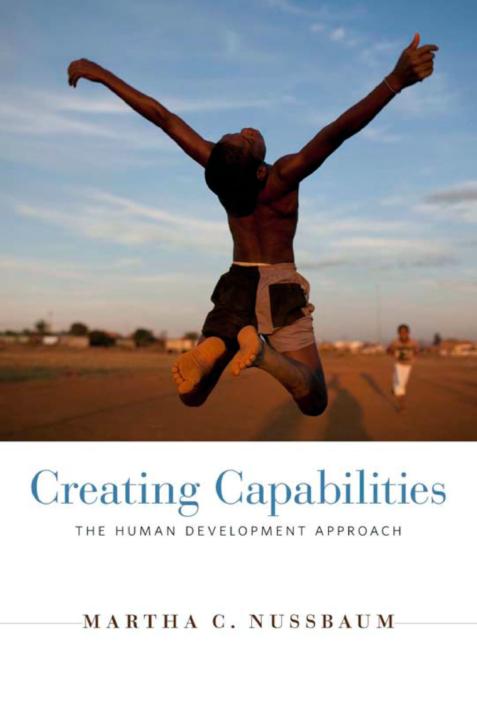CREATING CAPABILITIES
CREATING CAPABILITIES
The Human Development Approach
Martha C. Nussbaum
THE BELKNAP PRESS OF HARVARD UNIVERSITY PRESS
Cambridge, Massachusetts, and London, England 2011



To all the members of the
Human Development and Capability Association
CONTENTS
ix
Chapter 203
PREFACE
For a long time, economists, policy-makers, and bureaucrats who work on the problems of the world's poorer nations told people a story that distorted human experience. Their dominant models asserted that the quality of life in a nation was improving when, and only when, Gross Domestic Product (GDP) per capita was increasing. This crude measure gave high marks to countries that contained alarming inequalities, countries in which a large proportion of people were not enjoying the fruits of a nation's overall economic improvement. Because countries respond to public rankings that affect their international reputation, the crude approach encouraged them to work for economic growth alone, without attending to the living standard of their poorer inhabitants, and without addressing issues such as health and education, which typically do not improve with economic growth.
This model persists. Although it is most firmly entrenched in standard analyses of the achievements of "developing countries"as in the practice of development economics and in agencies associated with development, such as the International Monetary Fund (IMF) and the World Bank-it is also widely used to think about richer nations and what it means for them to "develop" or to im prove their quality of life. (All countries are "developing countries," although that phrase is sometimes used to refer to poorer countries: every nation has a lot of room for improvement in delivering an adequate quality of life to all its people.) Since these nations also contain large inequalities, the approach generates similar distortions in them.
Today there is a new theoretical paradigm in the development and policy world. Known as the "Human Development" approach, and also as the "Capability Approach" or "Capabilities Approach," it begins with a very simple question: What are people actually able to do and to be? What real opportunities are available to them? This question, though simple, is also complex, since the quality of a human life involves multiple elements whose relationship to one another needs close study. Indeed, one of the appealing features of the new approach is its complexity: it appears well equipped to respond to the complexities of human life and human striving. After all, the question it poses is one that people ask themselves often in their daily lives.
This new paradigm has had increasing impact on international agencies discussing welfare, from the World Bank to the United Nations Development Programme (UNDP). Through the influence of the Human Development Reports published each year since 199o by the United Nations Human Development Report Office, it also now affects most contemporary nations, which have been inspired to produce their own capability-based studies of the well-being of different regions and groups in their own societies. Few nations today do not regularly produce such a report. (Even the United States joined the group in 2008.) There are also regional reports, such as the Arab Human Development Report. In addition, the Human Development and Capability Association (HDCA), with membership of approximately 700 drawn from 8o countries, promotes high-quality research across a broad range of topics where the human development and capability approaches have made and can make significant contributions. Most recently, the paradigm has had a major influence on the Sarkozy Commission Report on the measurement of economic performance and social progress.
The increasingly influential Capabilities Approach has been expounded primarily in dense articles and books for specialists. Repeatedly, general readers and instructors in undergraduate courses have lamented the lack of a more accessible book on the topic. This book aims to fill that gap, making the key elements of the approach clear and helping people assess it against its rivals. Above all, it attempts to situate the approach in the narrative context of human lives, showing how it makes a difference to what policy-makers notice in these lives and, hence, to the ability of policy to construct meaningful interventions that show respect for and empower real people, rather than simply reflecting the biases of intellectual elites.
Improving people's quality of life requires wise policy choices and dedicated action on the part of many individuals. It may seem unnecessary, then, to write a theoretical book on the topic, however immersed in narrative detail. Theories, however, are a large part of our world, framing the way issues are seen, shaping perceptions of salience, and thus slanting debate toward certain policies rather than others. Wise activists have all too little influence in the corridors of power. Because the dominant theories that have historically guided policy choice in this area are deeply mistaken, as I shall argue, they have steered development policy toward choices that are wrong from the point of view of widely shared human values (such as respect for equality and respect for dignity). We need a countertheory to challenge these entrenched but misguided theories, if we want to move policy choice in the right direction. Such a countertheory should articulate the world of development in new ways, showing us a different picture of what our priorities should be. The Capabilities Approach is the counter-theory we need, in an era of urgent human problems and unjustifiable human inequalities.
CREATING CAPABILITIES
I
A WOMAN SEEKING JUSTICE
All over the world people are struggling for lives that are worthy of their human dignity. Leaders of countries often focus on national economic growth alone, but their people, meanwhile, are striving for something different: meaningful lives for themselves. Increased GDP has not always made a difference to the quality of people's lives, and reports of national prosperity are not likely to console those whose existence is marked by inequality and deprivation. Such people need theoretical approaches that can aid their struggles, or at least provoke public debate by drawing attention to them; they do not need approaches that keep these struggles hidden or muffle discussion and criticism. As the late Mahbub ul Haq, the Pakistani economist who inaugurated the Human Development Reports of the United Nations Development Programme, wrote in the first of those reports, in 19go: "The real wealth of a nation is its people. And the purpose of development is to create an enabling environment for people to enjoy long, healthy, and creative lives. This simple but powerful truth is too often forgotten in the pursuit of material and financial wealth." According to Haq, development economics needs a new theoretical approach if it is to respond to people's most urgent problems.
Consider Vasanti, a small woman in her early thirties who lives in Ahmedabad, a large city in the state of Gujarat, in northwestern India. Vasanti's husband was a gambler and an alcoholic. He used the household money to get drunk. When that money was gone, he got a vasectomy to take advantage of the cash incentive that Gujarat's government offered to encourage sterilization. So Vasanti had no children to help her, a huge liability, given the fact that a childless woman is more vulnerable to domestic violence. Eventually, as her husband became more abusive, she left him and returned to her own family.

